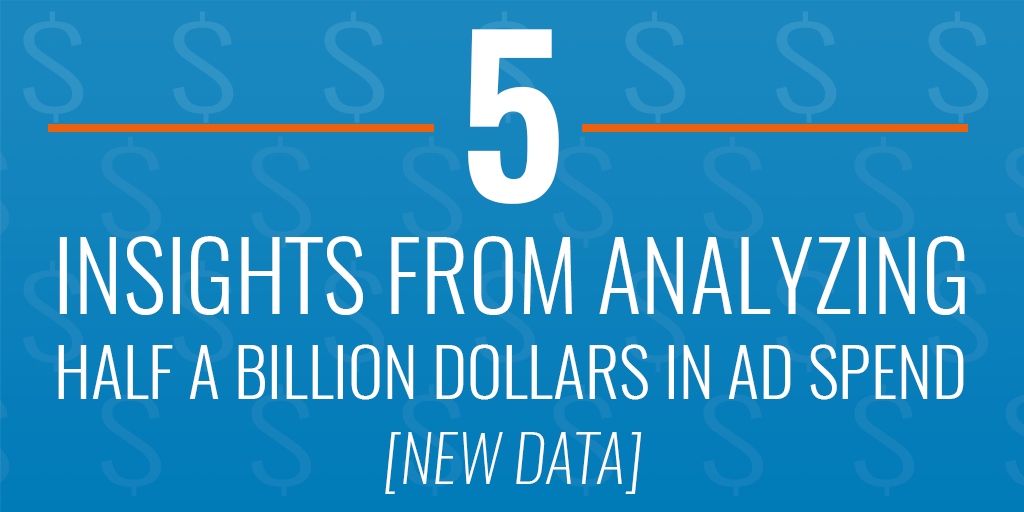Please visit Marketing Land for the full article.

Online Marketing News

Please visit Marketing Land for the full article.

Please visit Marketing Land for the full article.

Please visit Marketing Land for the full article.

Please visit Marketing Land for the full article.

Please visit Marketing Land for the full article.

Please visit Marketing Land for the full article.

Please visit Marketing Land for the full article.



What does the social media landscape look like in 2017? What networks are going to help me drive awareness, conversation and conversions? What types of content will have the most impact on my audience? Is Snapchat a good investment?
As we near the end of 2016, these are likely just a few of the questions being asked by marketers everywhere. While I’d love to say there’s a magical crystal ball with all the answers out there, we all know that nothing is permanent or sure-fire when it comes to social media. But we do have some data and insights that can help.
In it’s The State of Social 2016 report, Buffer surveyed more than 1,200 B2B and B2C marketers to better understand how they’re currently using social media and where they plan to go in 2017. Those who participated work for companies of all sizes and across a variety of industries.
Below we offer a few key takeaways from the report as well as some tips for using those insights to guide your social media marketing efforts in the coming year.
Humans are highly visual beings, so it’s certainly no surprise that online video content is becoming a favorite source of information and entertainment across the digital landscape. As a result, marketers want to create more video content, but they often don’t have the time, resources or cash to do so. In fact, according to Buffer’s report 83% of marketers said they’d create more video if they didn’t have resource limitations. In addition, 30% said they would like to focus more on Facebook video in 2017.
With that said, now may be to the time to determine if video is right for your brand and audience, and aligns with your overall business goals, particularly when it comes to Facebook.
“Right now, video is hot and is standing out in the Facebook News Feed. But that won’t always be the way,” Buffer said. “As video creeps up in popularity and more and more brands and individuals are sharing it, it’ll be harder to get noticed. Eventually, brands may have to pay for video reach, just as many do already for sponsored posts and ads.”
As for the content of your videos, some options to consider are customer or client testimonials, product demos or how-to videos. At TopRank Marketing, each week we create an industry news roundup post that features a video of our team members discussing the latest happenings. Below is a recent example.
[youtube]https://youtu.be/VkqhTqfxmSM[/youtube]
Check out these resources for more video ideas:
Despite Facebook’s changes to its News Feed algorithm to favor content from users’ friends and family, and a general decline in organic visibility, marketers are not abandoning the platform. According to Buffer’s report, 93% of marketers still use Facebook for their business and 91% have dabbled with Facebook ads.
Whether you’re relying only on organic reach or paying to play, you need to find a way to get your content to stand out. A great first step is digging into your website analytics and Facebook Insights to uncover the types of posts that are really resonating with your audience. Look at the kinds of posts that are driving the most traffic to your website, as well as those that are garnering the most engagement on your page. Use that information to tweak your content plan, as well as your messaging.
Check out these resources to help boost your Facebook efforts:
According to the report, marketers are beginning to abandon Google+, with 27% saying they’ll be using it less in 2017. For many of us, this may not be that surprising. While it showed a ton of promise when it launched five or so years ago, some of us have found it’s hard to get the engagement and ROI necessary to justify the efforts.
So, if you’re planning on jumping ship and putting your efforts elsewhere in 2017, you certainly won’t be alone. But, don’t let this statistic make the decision for you. Google+ still may be worth your time and effort. Read Buffer’s 5 Surprising Reasons To Reconsider Google+ (That You Can Act On Today) before you pull the plug.
Social media is an amazing tool for building brand awareness and encouraging engagement, but most aren’t harnessing the power it has as a customer service and support tool. According to Buffer’s report, just 21% of respondents said customer support was a reason for using social media.
The bottom line? Using social media to provide customer service is a huge opportunity to differentiate yourself from your competitors, engage in meaningful interactions and grow the one-on-one relationships with your customers.
But, from my perspective, the caveat here is that you’ll have to be prepared for public displays of negative feedback. As I wrote in another recent TopRank Marketing post:
“Every brand and business dreams of complete customer satisfaction, but that’s rarely the case. Things happen and social media is often an easy place for your customers to air their grievances. While it can be scary to allow mistakes to be visible for the whole social media world to see, use any negative feedback as an opportunity to show humility, understanding and your drive to take care of your customers.”
Many marketers are struggling to inspire measurable action from their social media audiences. According to the report, 58% of marketers say driving traffic to their website is one of their biggest challenges, followed by lead generation (49%) and defining ROI and measurement (42%).
How do you overcome these challenges? First of all, make sure you have a detailed and documented social media marketing strategy. A documented strategy will help you plan and execute your efforts, and provides a foundation that can be refined as you analyze the data coming in.
Check out these posts to get more insights on social media strategy and inspiring audience action:
Read the full The State of Social 2016 report.
What something you’ll be adding or dropping from your social media marketing strategy in 2017? Tell us in the comments section below.
The post 5 Interesting Insights from Buffer’s The State of Social 2016 Report appeared first on Online Marketing Blog – TopRank®.

This week, members of the TopRank Marketing team are off to Boston to celebrate the 10th anniversary of the MarketingProfs B2B Marketing Forum. It’s no mystery that this conference put on by Ann Handley and the incredibly talented MarketingProfs team is one of our favorites. In addition to our CEO Lee Odden speaking at the […]
The post A Preview & Exclusive Insights for the 2016 MarketingProfs B2B Marketing Forum #MPB2B appeared first on Online Marketing Blog – TopRank®.

The only constant in search advertising is change. The loss of right side ads. More and much larger ads above the organic search results. Exciting new ad targeting options. And so much more.
With that in mind, and in honor of our recent Grader milestones – the Grader has now been run over 1 MILLION times! – I set out to look at fresh data to get a sense for what if anything is changing in terms of the overall AdWords ecosystem.
Back in late 2013, we did a similar analysis and found that small businesses in particular were leaving a lot of opportunities (and money) on the table, by committing fatal errors like low account activity and failing to optimize for mobile search.

So – have things gotten better, or worse? Let’s take a look at the updated AdWords advertising statistics.
A quick note on the ad data sources: I looked at 30,000 reports from advertisers who ran WordStream’s AdWords Performance Grader for the first time in the last six months. I focused on small and medium-sized businesses with average spend between $10 and $5000 per month, with accounts world-wide.
Since my analysis in 2013, impression-weighted Quality Scores are up! As of 2016, the average impression-weighted Quality Score for SMB’s is around 6.5. What does it mean? Has everyone gotten better at creating unicorn ads?
Not necessarily. It’s not that there are fewer low Quality Score keywords out there. There are plenty of donkey keywords with Quality Scores of 1, 2, 3 and 4. But these irrelevant, low-QS keywords are now less likely to ever get impressed to a user.

What’s happening here is that with the rise in mobile search and the loss of right side ads, there are fewer ad spots overall, so Google has to be pickier in terms of deciding which ads to show. Not surprisingly, they are increasingly preferring to run higher-quality ads over donkey ads. Since low-QS keywords don’t even earn impressions now, the average impression-weighted Quality Score is up overall.
Key Takeaway: CTR (the biggest component of Quality Score) matters more than ever, and continues to trend up. If your keywords have very low Quality Scores (1-4) they’re just not as likely to ever be seen – as though you’re not even running an ad campaign to begin with (i.e. why bother setting them up in the first place?)
CTRs this year are trending higher than ever.

When I look at account-wide CTRs (average click-through rate for search) the average SMB account ad CTR across all positions is 3.23%. We’ve been tracking this number for a while, and that is up from 2.7% just a year earlier. That’s a big change!
There’s a lot of things going on but the biggest two factors behind this increase are:
One thing to point out here is that there’s tremendous leverage in ad text optimization. The top 10% of accounts (the unicorns) are doing more than 3X better than everyone else (the donkeys). How? Read this guide.
OK, let’s recap what we’ve found so far:
Which means: You’re going to have to raise your CTR just to keep your current spots, and raise it even more to get ahead. How?
One of the biggest missed opportunities (in terms of big impact for little effort) that my research uncovered was a chronic underuse of negative keywords.

People aren’t using them as much as they should. Half of accounts didn’t add a single negative keyword in the last month. That’s a lot of wasted money.
Now, Google says Negative Keywords don’t impact QS (because it’s calculated based on exact-match keywords). But I’m not so sure about that (more in this case study, if you’re curious).
However, even if they don’t impact Quality Score, negative keywords are critical for high ROI because you’re eliminating wasteful spend (clicks from people who aren’t going to buy anything) and re-routing that money to more useful campaigns – all good things. Periodically review your search query reports and set low- or non-converting keywords as negatives.
Who cares about CTRs and QS? The whole point of optimizing for these metrics is to increase your conversions in the end!
Unfortunately, less than half of small business advertisers have conversion tracking turned on.
![]()
This makes me sad. Because these advertisers (and we’re talking millions of advertisers, if you extrapolate these results to all the companies using AdWords out there) are kind of missing out of the best feature of direct response marketing: the ability to track results and make optimizations and adjustments based on your data.
It’s also why I’ve gone on record saying that Smart Goals aren’t that dumb (for many small businesses). Some form of conversion tracking is better than nothing.
Of the approximately 15k accounts that did have conversion tracking on, we found little change in average conversion rates and conversion rate distributions.
Whatever you’re selling on the internet, the median conversion rate was 2.9%. Previous studies we’ve done have shown average conversion rates to be in the 2.5-3.5% range.
Honestly, I suspect it would be even lower if the 54% of advertisers not using conversion tracking turned conversion tracking on – because businesses that aren’t tracking conversions are probably making a lot of mistakes.

What do we make of this data? A couple of my theories include:
One important takeaway is that the top 10% of advertisers (unicorns) continue to crush everyone else with conversion rates 3X higher than the donkeys – they see conversion rates of 8% or more! Reach for the stars.
Based on these insights, I think it’s clear where advertisers (and agencies) should be focusing when it comes to optimizing their campaigns for the changing AdWords landscape:
We’ve just announced some new features in the Grader that can help you adapt to the new landscape. The new features include:

Get your free Grader report now! And let me know what you think!